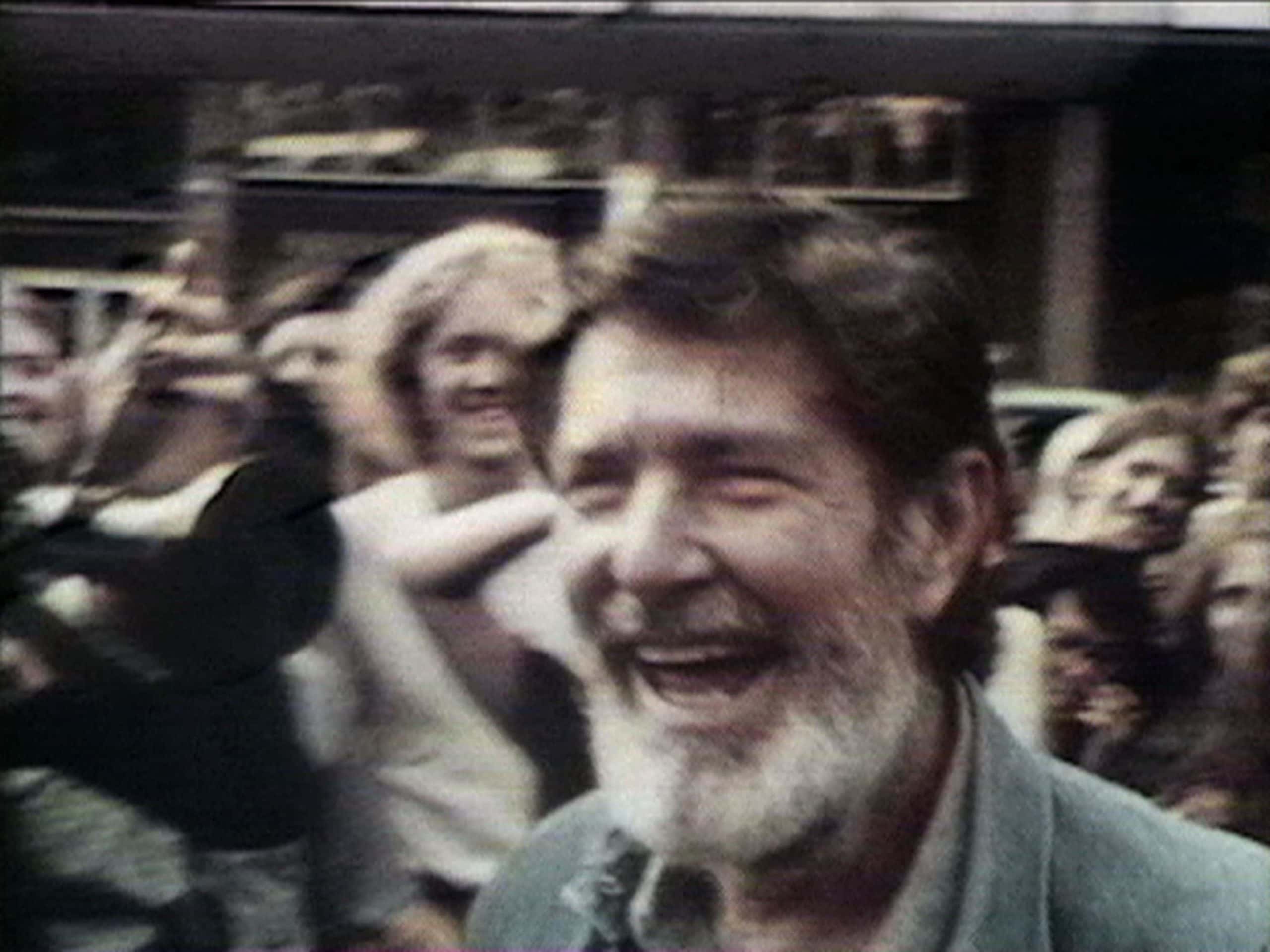
The first thing that I see is people taking pictures of Paik’s TV Buddah (1989). There’s something about this that feels appropriate given the things that Paik wanted to achieve with his art; his view of technology was utopian, stressing the ways in which it can bring people together, believing that it can help growth and spirituality rather than simply hindering it.
In a landscape where so much energy and quote-unquote critical thinking goes towards the idea that technology is some sort of demon that robs people of humanity, Paik’s treatment of the world that developed around him feels like a necessary tonic.
Paik’s view of technology was utopian, stressing the ways in which it can bring people together
Often, Paik’s art takes technology and places it directly within nature, allowing the two things to exist in harmony instead of opposition. This is seen most explicitly in the installation TV Garden (1974), which has TVs amidst a garden, as the screens play other pieces of Paik’s video art in a repeated montage.
While the speed of Global Groove (1973) can often feel like information overload – a theme that recurs throughout the exhibition – it’s something that one can get lost in; the beeping on the soundtrack, the sound of tap dancing, it becomes almost like a kind of futuristic meditation. This idea, and the theme of zen, is something that Paik often returned to, not just in these high-speed works, but in other, more minimalist ones, influenced by his friend and collaborator John Cage.
Paik’s art takes technology and places it directly within nature
The 1964 work Zen For Film feels like a kind of visual answer to Cage’s ‘4:33.’ Paik’s piece simply shows a camera projecting nothing onto a wall; the changes come from the wear and tear to the film, it’s interpretation influenced by the sound of the gallery that surrounds.
The Tate’s exhibition – organised by theme, rather than in a chronological order – contains some of Paik’s most well-known work, including his robot sculptures, and the video piece Nixon (1965-2002); while the robots, sculptures made from TVs and old technology, are a way of humanising technology, and illustrating its development through a family of robots, each new generation made from newer technology, Nixon provides a more serious critique.
On two screens, Nixon’s most (in)famous press conferences are shown, from his “great silent majority,” to the declaration that he was “not a crook.” While one of these screens simply presents the speeches and press conferences, another has its video and audio distorted, Paik’s way of manipulating a mass media that so often manipulates its consumers.
But in contrast to this, the exhibition also shows a series of video works made by Paik in a sense of vast, international collaboration. Pieces like Wrap Around the World (1988) and Bye Bye Kipling (1986) exist as a way of bringing together artists, designers, dancers, and other people from all over the world, showing how technology can be used as a way to bring people closer together, showing not only who we are but who we could be. This feels, especially with the title Bye Bye Kipling, like a challenge to the idea that “east is east, and west is west, and never the twain shall meet.”
The final piece in the exhibition is Paik’s Sistine Chapel (1993). This installation takes all of Paik’s ideas about media, and presents them simultaneously. 40 projections present the good, the bad, and the ugly of technology; Sistine Chapel feels like the most prophetic of Paik’s work, hinting at a world where everyone has seemingly the entire history of knowledge available in the palm of their hand.
40 projections present the good, the bad, and the ugly of technology
The installation presents images of serenity, violence, and nudity, like a kind of high-speed channel surfing, having too many tabs open at the same time and while also being bombarded by pop-up ads. It’s striking that the exhibition should end in a way that’s far removed from the minimalist serenity of pieces like TV Buddha.
This doesn’t undercut the optimism of the work that comes before it; there’s nothing about Sistine Chapel that feels pessimistic, or that shows access to information as being an inherently bad thing. Instead, it feels like a fighting echo of so much of Paik’s ethos; that technology is a way for us to look into, and potentially choose, our future.


